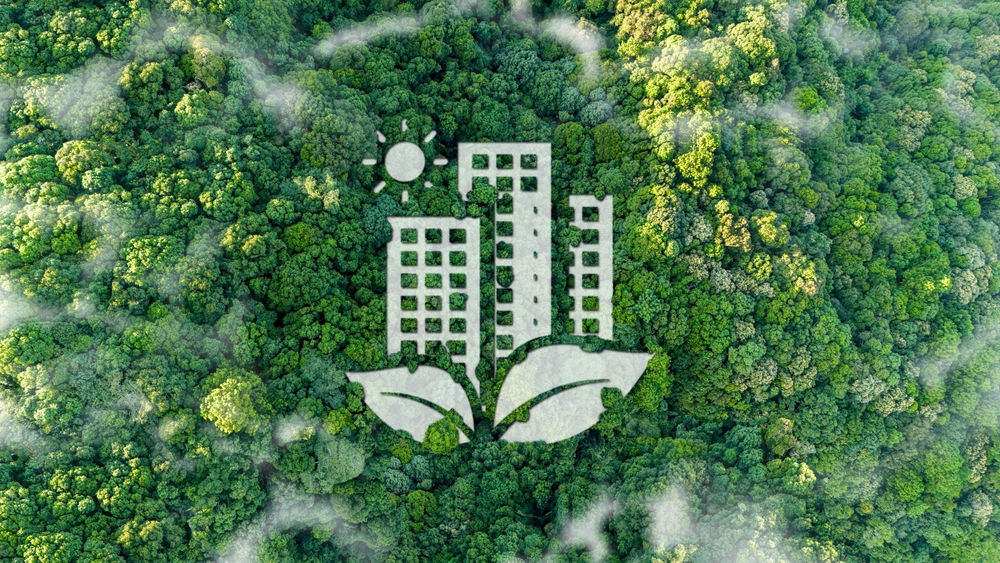New methods inspired by coral reefs can capture carbon dioxide from the atmosphere and convert it into durable, fire-resistant building materials, providing a promising solution for carbon-negative structures.
New approaches to carbon-negative structures draw inspiration from the natural capabilities of marine coral reefs and from the natural ability to create robust structures by sequestering carbon dioxide.
The resulting mineral polymer composite exhibits exceptional mechanical strength, fracture toughness and fire resistance.
“This is a crucial step in the evolution of carbon dioxide conversion,” said Qiming Wang, associate professor of civil and environmental engineering at the USC Viterbi School of Engineering.
“Unlike traditional carbon capture techniques that focus on carbon dioxide accumulation and conversion to liquid substances, this new electrochemical manufacturing process has been found to convert compounds into calcium carbonate minerals in 3D printed polymer scaffolds.”
The role of coral reefs in carbon-negative production.
Existing carbon capture technologies generally focus on the accumulation of carbon dioxide and conversion into liquid substances. However, this is generally expensive and inefficient.
This new carbon-negative structure method provides a cheaper solution by integrating carbon capture directly into building materials.
It was directly exposed to how aragonite skeletal structures, known as Corallites, were created.
In nature, corals build corals through a process known as biomineralization. In this process, corals sequester carbon dioxide from the atmosphere through a process of photosynthesis. The compounds are then combined with calcium ions from seawater to precipitate calcium minerals around the organic template.
The researchers replicated this process by creating 3D printed polymer scaffolds that mimic coral organic templates.
They were then coated with a thin conductive layer. These coated structures were connected as cathodes to electrochemical circuits and immersed in calcium chloride solution.
When carbon dioxide was added to the solution, it was subjected to hydrolysis and decomposed into bicarbonate ions. These ions reacted with calcium in solution to form calcium carbonate, gradually filling the 3D printed pores.
This has resulted in the final product, dense mineral polymer composites.
The advantages of fire-resistant materials
The most surprising property of experimental composites was their response to fire.
Although the 3D printed polymer scaffolds do not have inherent fire-resistant properties, the mineralized composites maintained structural integrity under the research team’s experimental flame tests.
“The carbon-negative manufacturing method revealed the natural fire suppression mechanism for direct flame exposure for 30 minutes,” Wang said.
“When exposed to high temperatures, calcium carbonate minerals release small amounts of carbon dioxide that are thought to extinguish the fire.
“This built-in safety feature offers a great advantage for construction and engineering applications where fire resistance is critical.”
In addition to being fire-resistant, cracked manufactured structures can be repaired by connecting them to low-voltage electricity. The electrochemical reaction can re-add the cracked interface and restore mechanical strength.
The future of carbon negative structures
After a rigorous life cycle assessment, researchers discovered that manufacturing methods are characterized by negative carbon emissions, revealing that carbon capture exceeds the carbon emissions associated with manufacturing and operations.
The researchers also demonstrated how to assemble manufactured composites into larger structures using a modular approach, creating large-scale load-containing structures. Composites may be used in construction and other applications that require high mechanical resistance.
Wang concluded that researchers are planning to focus on the commercialization of patented technologies.
With building materials and construction, which are responsible for around 11% of the world’s carbon emissions, the new carbon-negative manufacturing method of this research lays the foundation for the potential of carbon-negative buildings.
Source link

